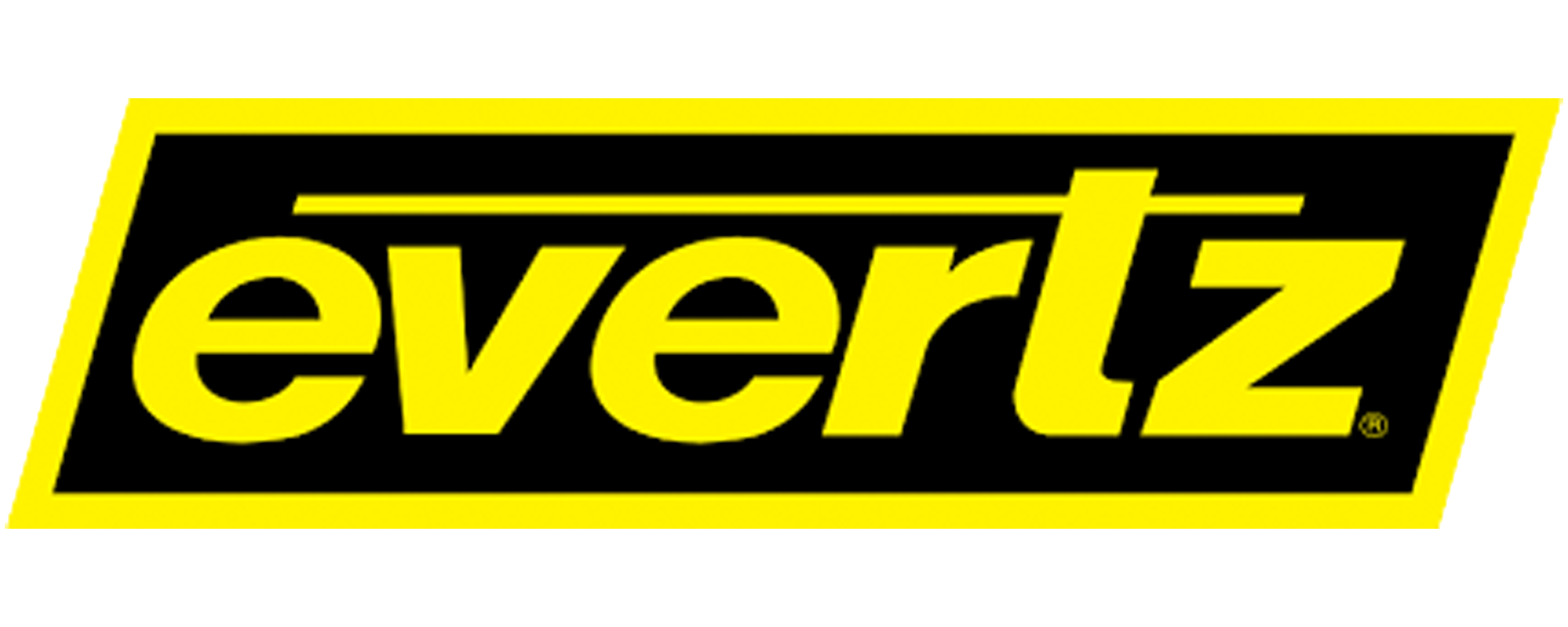Introduction
How do you handle a mammoth increase in traffic, and deliver a flawless experience to your audience at the same time? With the right load balancing technology, scalability and high availability are no longer barriers to achieving this.
Loadbalancer.org takes care of your traffic, without contract lock-ins or limiting your options. Our clever, not complex solution brings the speed, resiliency, and security you need for uninterrupted access and happy customers.






Media Resources
Check out our library of media and broadcast resources to see how it works in practice.
Formal endorsement of our products should not be denoted from the third party logos cited above. For further details refer to the ‘Disclaimer and Fair Use Statement’ in our Terms & Conditions.
Explore
Chapter One: Object storage in media
Digital content storage
An active storage archive is critical for DAM workflows to operate seamlessly. Media asset management storage solutions need to be instantly retrievable, scalable, cost effective, and able to accommodate a variety of formats (e.g. 4K, 8K, and VR/360). High capacity storage applications therefore exist to meet this challenge with cost-effective, disk-based active archives. And these in turn require load balancing for high availability and performance.
A summary of the benefits of load balancing media storage solutions include:
- Facilitate zero downtime
- Support the integrity of storage infrastructure
- Offer consistent access to storage
- Enhance data management applications
- Play a role in ransomware protection
For more information on the importance of load balancing object storage in media, check out our detailed guide.
Guide
Find out more about load balancing object storage for scalable, secure data access and recovery
Chapter Two: Load balancing Digital Asset Management platforms
Digital Asset Management platforms
Digital assets
In a nutshell, any digital file can be considered an asset e.g. documents, spreadsheets, audio files, images, logos, videos, graphic files, illustrations, 3D files. All of these files will typically sit across a variety of different platforms, in multiple locations, and require tools to manage and edit these assets, without necessarily moving these large files from their original location.
Digital Asset Management (DAM)
Digital Asset Management (DAM) applications, also known as Media Asset Management (MAM) or Video Asset Management (VAM), provide a centralized network interface and repository, designed to access, capture, and manage large numbers of media files. Examples include Brandfolder, Canto, Bynder, Widen Collective, and Image Relay. This software allows users primarily to manage and edit the assets themselves, although some go further, offering additional features such as workflow creation and order fulfillment.
It offers three main solutions:
- It brings together assets from dispersed storage locations
- It organizes data so it’s easy to find
- It allows different users to access a different version of the same file at the same time
These DAM software solutions may be cloud-based, operating as Software as a Service (SaaS), on-premise, or operate in a hybrid, open-source environment (e.g. AtroDAM or Cumulus). But they do not exist in isolation. The media technology stack that includes Digital Asset Management (DAM) software, will also typically include related software such as a Content Delivery Network (CDN), and a Content Management System (CMS).
Content Delivery Networks
A Content Delivery Network (CDN) is a geographically dispersed group of servers that work together to provide fast delivery of media content. Because it ensures high transmission speeds, CDN services are ever popular, with the majority of web traffic now served through CDNs. Furthermore, it can also offer a degree of protection against Distributed Denial of Service (DDoS) attacks.
Using a DAM system in conjunction with a CDN distribution service therefore results in:
- Faster distribution of media assets to end users
- Quicker website load times
- Lower bandwidth costs
- Greater content availability and redundancy
- Improved website security
Content Management Systems (CMS)
To fully exploit a media asset for an external audience, the metadata attached to that asset also needs to be managed. Metadata may be stored within the asset itself, or independently in a Content Management System (CMS) such as WordPress. One of the benefits of DAM therefore is that by integrating the CMS with DAM software, these metadata assets can be managed and input from a central location, ensuring the smooth access, management and distribution of that data.
DAM can also play a role in optimizing and automating image dimensions, naming conventions, Alt Text, and watermarking. Integrating DAM with a CDN can also result in faster CMS content distribution.
Benefits of load balancing digital management platforms
There are five main ways in which load balancing supports the digital asset management ecosystem described above:
- 1
Performance
High throughput requirements create high demand for server resources. A load balancer can increase performance by allowing you to utilize several commodity servers to handle the workload of one application. It also distributes network traffic evenly across all servers, underpinning reliability, and ensuring optimum load times.
- 2
High availability
There is a high opportunity cost to the downtime of DAM software. Load balancing ensures a seamless user experience by guaranteeing the high availability of this software. If a server is compromised, or if the load approaches capacity, the load balancer seamlessly reroutes traffic to another working server. This provides a high level of fail-safety.
- 3
Removing the single point of failure
Running an application on one server gives you a single point of failure, but by using a load balancer, this moves the point of failure to the load balancer itself. And by going one step further, deploying a clustered pair of load balancers, this removes the single point of failure altogether!
- 4
Maintenance
Using a load balancer also allows servers to be easily brought on and offline, allowing maintenance tasks to be performed, without any disruption to the end user.
- 5
Scalability
With the amount of digital assets increasing exponentially, scalable content infrastructure remains a huge challenge – as do the costs associated with this. Load balancers are fully scalable and designed to deliver maximum throughput speed from day one – with some providers offering licensing agreements that enable infinite scalability, at no additional cost. This provides future proofing and infrastructure resiliency in the face of continued data growth.
Applications
More on load balancing DAM applications – Providing a centralized network interface and repository, designed to access, capture, and manage large numbers of media files
Chapter Three: Example - Load balancing Ross Video
Load balancing CMS Inception, and DAM Streamline
To ensure the resilience of its Inception newsroom content management system and Streamline media asset management system, Ross Video supplies load balancing appliances to its customers, as an integral part of both solutions, because reliability is key.
Challenges faced
Ross Video had acquired its load balancers from a well-known vendor, but started to experience an unacceptable failure rate on the appliances in their first year of use. To make matters worse, the vendor would not honor the product warranties and would only deal directly with Ross Video’s customers, asking for more money in the process.
To make matters worse, the vendor would not honor the product warranties and would only deal directly with Ross Video’s customers, asking for more money in the process.
“Right from the start, Loadbalancer.org took a real and proactive interest in our business. This was a radical departure from our experience with our previous load balancing vendor.”
Solutions and results
Ross Video chose to integrate Loadbalancer.org’s Enterprise R20 appliance into its Inception and Streamline solutions, as standard. And since deploying the Loadbalancer.org Enterprise R20 appliance as part of its Inception and Streamline solutions, Ross Video has had none of its previous problems with load balancer reliability – with zero customer returns or failures.
Chapter Four: Load balancing media streaming platforms
Load balancing for unrivaled performance
A load balanced server cluster routes the service requests to the server with the least activity, spreading application service requests to all participating servers, thereby improving the performance of the system. This optimizes the use of server resources, prevents overload, and allows user requests to be processed faster.
Traditional load balancers use a combination of routing-based OSI Layer 2/3/4 techniques (generally referred to as Layer 4 load balancing). All modern load balancers also support layer 7 techniques (full application reverse proxy). However, just because the number is bigger, that doesn’t mean it’s a better solution for you!
Layer 4 DSR is made for streaming
Layer 7 based load balancing solutions are undoubtedly simple and flexible, but Layer 4 Direct Server Return (DSR) / Direct Routing (DR) mode still has unbeatable performance. In fact, on average, DR mode is 8x quicker than NAT for HTTP, 50x quicker for terminal services and much, much faster for streaming media or FTP.
With Layer 4 DSR mode reply traffic flows from the servers straight back to the clients. This means that the load balancer is bypassed on the return journey. Using DSR therefore maximizes the throughput of return traffic and allows for near endless scalability.
For more info check out the blog below, which includes a demonstration of what happens with, and without load balancing, when streaming video.
Blog post
How load balancing can help to achieve unrivaled performance with streaming media and video on demand
Chapter Five: Example - Load balancing myMovies
Load balancing content hosting and distribution
mymovies produces and provides short-form movie content for some of the biggest media brands in the UK, including the likes of Virgin Media, Orange, MSN, EE and Vue Cinemas.
Hosting and distribution content is central to the company’s operation. To do that, mymovies had been sharing data hosting facilities with another organization. But with increasing demand and a desire to take complete ownership of all its resources, the business decided to set up its own dedicated hosting capability.
Challenges
Previously, mymovies had shared load balancing functions with its former hosting partner, but now needed to find its own load balancing solution.
Solutions and results
mymovies has deployed Loadbalancer.org’s Enterprise high-availability clustered pair appliance to load balance communication and video content data across its servers. The Loadbalancer.org solution handles millions of requests a month from customers at a rate of around 150mbps. All web requests are handled by the load balancers and then forwarded to the relevant web servers in mymovies’ data center, based on mymovies’ customizable scheduling. If any web server fails a health check, the load balancers take the server out of the cluster immediately, so that customers get the content they need without any interruption to the service they get from mymovies.
One of the most important benefits of the Loadbalance.org solution is its stability. mymovies provides a broad range of video content that its customers rely on to embellish and enhance their own products and services.
Case study
Loadbalancer.org helps mymovies deliver a secure, reliable video content service to worldwide media organizations


